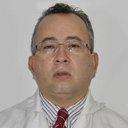Bacteriocins in S. mutans strains isolated from children with and without dental caries: biotypes and sensitivity to antibiotics.
Mots clés
Abstrait
The aim of this study was to determine the production of bacteriocins in the Streptococcus mutans strains isolated from children with and without dental caries. With this purpose the dmft index was determined and non-stimulated saliva was collected from 53 3- to 5-year-old children. The samples were cultured on Mitis Salivarius Bacitracin agar and incubated anaerobically for two days at 37 degrees C. The isolates were biotyped using the Api-ZYM enzymatic system (bioMérieux; Marcy-lE'toile, France). Bacteriocin was detected using the double layer onto brain heart infusion agar technique and the minimal inhibitory concentrations of the isolates were evaluated against penicillin, amoxycillin, cefazolin, erythromycin, clindamycin, imipenem and vancomycin using an agar dilution method. The dental caries experience in these children was 66% (35/53) and dmft index average was 3.2 (range 2-6). S. mutans was found in the saliva of 33 children (62%). In the 33 strains of S. mutans, 10 biotypes were found. Eight (24%) of the 33 strains evaluated produced bacteriocins, 6 of these strains came from patients with dental caries and the other two from patients without dental caries. All isolates were highly sensitive to the antibiotics tested.


